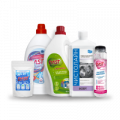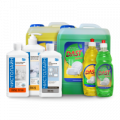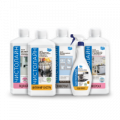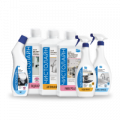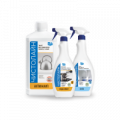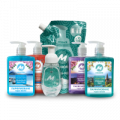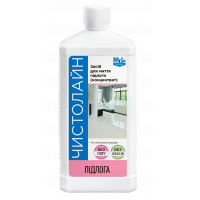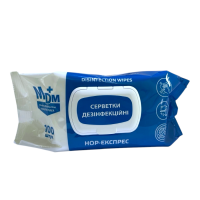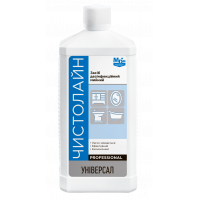How to Reduce Dust in Apartments and Offices: An Expert Approach
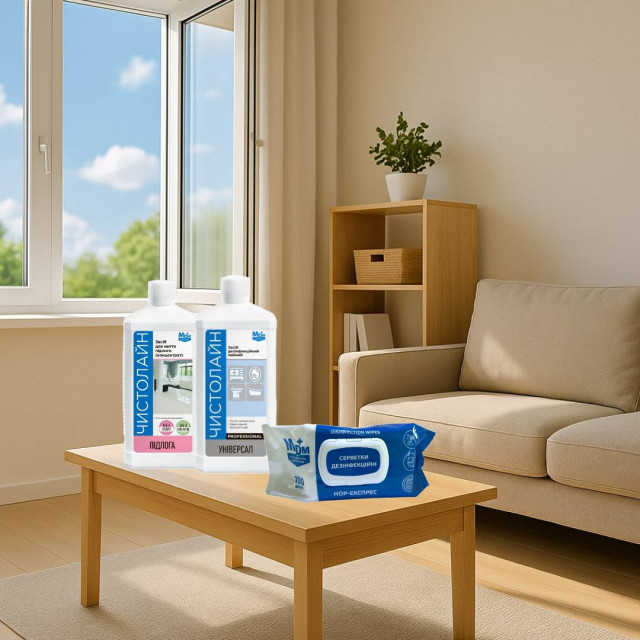
Content
Dust is one of the main enemies of cleanliness and health in any room. Its constant presence not only spoils the appearance of the interior but also negatively affects air quality, provokes allergies, bronchial diseases, and reduces overall well-being. From a hygiene expert’s perspective, controlling the amount of dust is an essential component of a proper cleaning system — both at home and in office spaces.
In this article, we will look into where dust comes from, how to get rid of it, and how to effectively reduce its presence indoors: what to focus on during cleaning, which products to use, and how to prevent dust from resettling.
Why Dust Accumulates: Main Sources
Before starting to fight dust, it’s important to understand where it comes from. This helps not only reduce its amount but also prevent future build-up. Main dust sources indoors include:
-
Textile products — carpets, curtains, and furniture upholstery trap dust and spread it with every touch.
-
Clothing and footwear — bring in fine dirt, pollen, and debris from outside.
-
Ventilation systems and windows — especially relevant in urban areas with heavy traffic.
-
Paper products, books, office materials — in offices, a major source of dust due to large volumes of documents.
-
People and pets — dander, hair, and pet fur are also part of dust mass and a common source at home.
Understanding the sources makes it easier to establish effective cleaning routines. If you want to know how to reduce dust, minimize sources or arrange additional care for them.
Regular and Proper Wet Cleaning
One of the most effective ways to reduce dust is wet cleaning. It removes particles and prevents them from spreading in the air. If you’re wondering how to get rid of dust at home, follow these tips:
-
Use microfiber cloths that capture even the smallest particles.
-
Keep the cloth damp throughout cleaning — re-wet it regularly.
-
Wipe not only horizontal but also vertical surfaces (cabinet sides, baseboards, windowsills).
-
Do wet cleaning at least twice a week in high-traffic areas (kitchen, office desks, living room).
-
In offices with air conditioners or ventilation systems — additionally wipe air ducts.
Regular wet cleaning combined with quality products reduces airborne dust by up to 60%.
For efficient daily cleaning in apartments or offices, use “Chistolain Universal” from MDM Group. It contains 2-phenoxyethanol (1%) with antimicrobial properties, as well as anionic, amphoteric, and nonionic surfactants that break down dust and dirt. Thanks to an acrylic copolymer, it forms a microfilm on surfaces that reduces dust resettling. The product is suitable for all surfaces and leaves no streaks.
For floors, “Chistolain Floor” is a great choice. It requires no rinsing, dries quickly, and is ideal for daily use in both offices and homes.
Using Air Purifiers and Filtration Systems
Household and office air purifiers with HEPA filters are powerful tools against dust. Choose them carefully:
-
Opt for models with HEPA filters class H13 or higher, which capture up to 99.95% of particles.
-
Match purifier coverage area with your room size.
-
Replace filters regularly — dirty ones lose efficiency.
-
In offices with lots of papers and equipment, run purifiers in continuous circulation mode.
Air purifiers significantly reduce dust, allergens, and even odors — especially useful in poorly ventilated rooms.
Minimizing and Caring for Textiles
Textiles are dust magnets. To reduce dust, control their quantity and clean them regularly:
-
Replace heavy curtains with roller blinds or shades, which are easier to clean.
-
Choose leather or eco-leather upholstery instead of fabric.
-
Wash covers, pillows, and throws at least every 2 weeks.
-
Avoid long-pile carpets, which trap dust even with frequent cleaning.
Less fabric means fewer dust-collecting areas.
Controlling Humidity Levels
Optimal humidity is a key factor in dust control. Dry air makes dust lighter and easier to spread. To maintain balance:
-
Use humidifiers with humidity sensors.
-
The ideal level is 40–60%. At lower levels, dust particles circulate more actively.
-
In rooms with air conditioners or heaters, use automatic climate control systems.
Balanced humidity helps dust settle instead of flying around.
Rational Space Organization
The fewer small items and open surfaces, the fewer places for dust to settle. This rule works both at home and in the office. To organize space efficiently:
-
Use closed shelves and organizers instead of open racks.
-
Regularly clean electronics — computers, printers, and monitors accumulate dust on fans and surfaces.
-
Reduce decorative elements that are difficult to clean.
Minimalism helps save cleaning time and reduces dust accumulation.
Professional Dust-Control Products
Besides mechanical cleaning, specialized products help keep dust under control:
-
Antistatic sprays for furniture and electronics prevent resettling.
-
Disinfectants (like Chistolain Universal) clean and sanitize surfaces while reducing microbial load.
-
Professional vacuum cleaners with HEPA filters are effective for both home and office.
-
Pre-moistened wipes — convenient for quick workplace cleaning.
High-quality products ensure longer-lasting results. If you’re looking for what to wipe with to prevent dust, NOR-express wipes from MDM Group are a practical solution for both office and home. Their formula includes іsopropyl alcohol — 55%, alkyl dimethyl benzyl ammonium chloride — 0.15%, purified water, glycerin, D-panthenol, fragrance. They clean, degrease, and give surfaces antistatic properties to reduce dust build-up.
Clean Air is the Result of Systematic Work
Dust is both an aesthetic and a hygiene problem. To reduce it, you need a comprehensive approach: wet cleaning, modern cleaning products, humidity control, less textile use, and smart space organization. A systematic approach and professional tools help maintain not only cleanliness but also a healthy atmosphere at home and in the office.
